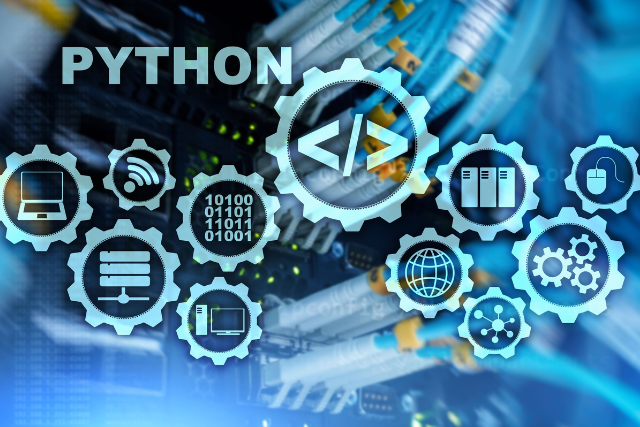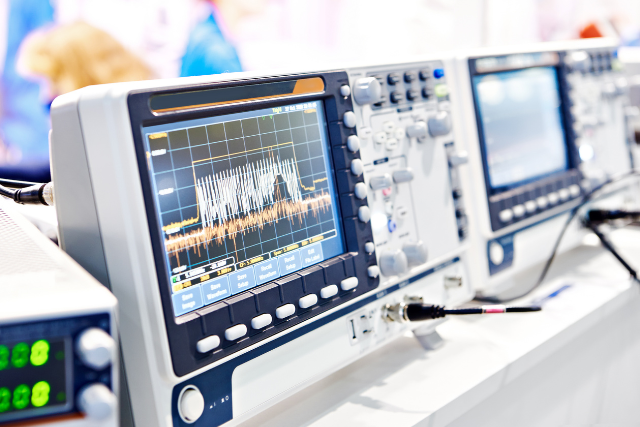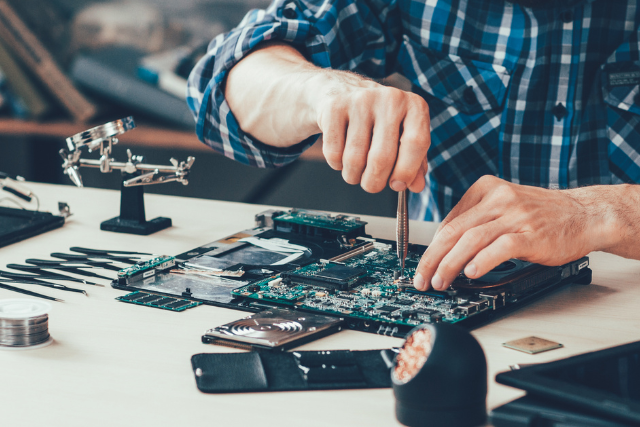Moving on your journey into robotics programming opens up a world where your creations can transcend simple tasks.
Mastering Python, C++, Java, and the Robotics Operating System (ROS) becomes indispensable as you navigate this landscape. Python’s flexibility allows for swift prototyping, whereas C++ offers unmatched precision and performance critical for real-time systems.
Java’s cross-platform nature ensures your projects reach a wider audience, and understanding ROS, a comprehensive framework, enables seamless integration of complex robotic functions.
Equipping yourself with these languages enhances your skill set and positions you at the forefront of innovation. To grasp the full potential these languages offer, consider the unique advantages and applications of each.
Key Takeaways
- Python excels in rapid prototyping and integration, supported by a vast toolkit and community.
- C++ provides precise control over hardware, which is crucial for real-time robotics applications.
- Java enables cross-platform development, ensuring code portability and system compatibility.
- Mastering ROS is essential for leveraging modular components and streamlining robotic development.
Python: The Versatile Choice
In robotics programming, Python stands out for its versatility and ease of use, offering a comprehensive toolkit that seamlessly integrates with various software and hardware platforms. You’re entering a space where your creativity isn’t just welcomed; it’s essential. Python’s simplicity doesn’t sacrifice power. Instead, it allows you to explore complex ideas without getting bogged down in syntactical minutiae.
With libraries like ROS (Robot Operating System), you’re not just coding; you’re weaving together components that can sense, think, and act in the physical world. Python’s script-based nature means you can prototype rapidly, testing ideas and iterating on solutions with an agility that’s liberating. It’s as if the language is encouraging you to push boundaries and experiment fearlessly.
Moreover, Python’s extensive community support opens up a treasure trove of resources. Whether you’re troubleshooting an elusive bug or looking for inspiration on tackling a particular challenge, you’ll find a community eager to support and uplift your endeavours. This collaborative spirit amplifies your potential, making Python a tool and a companion on your journey into the liberating world of robotics programming.

C++: Precision and Performance
While Python dazzles with its versatility, C++ takes the lead in robotics for its unmatched precision and performance capabilities. This language offers direct control over hardware resources, a crucial factor when every millisecond and byte matters. You’re not just writing code; you’re sculpting your robot’s brain with the utmost care for efficiency and response time.
C++’s rich set of features, including low-level memory manipulation, enables the creation of highly optimized algorithms critical for real-time robotics applications. Imagine programming a robot to navigate complex terrains. With C++, you can fine-tune the control algorithms, ensuring your robot reacts swiftly to obstacles, adapting its path on the fly without a hitch.
Moreover, C++ supports object-oriented programming (OOP), a boon for managing large, complex robotics projects. By encapsulating robot functionalities into classes and objects, you’re making your code more modular and maintainable and paving the way for code reuse across different projects.

Diving into C++ for robotics, you’re embracing a path of meticulous optimization and control. It’s your toolkit for pushing the boundaries of what robots can achieve, ensuring they perform flawlessly in tasks where precision and speed are non-negotiable.
Java: Cross-Platform Compatibility
Java’s cross-platform compatibility ensures your robotics programs run seamlessly across diverse systems, offering a significant advantage in the development and deployment stages.
This intrinsic feature, powered by the Java Virtual Machine (JVM), means you’re crafting code that’s liberated from the constraints of operating system-specific languages. It’s a game-changer, especially when working on projects intended for various hardware environments.
You’re not just coding; you’re building a bridge between your creation and the multitude of platforms out there. Java’s “write once, run anywhere” (WORA) mantra isn’t just a catchy phrase. It’s a liberating philosophy in robotics programming.
This universality reduces the time and resources typically required for adapting software to different machines. You’re free to focus on innovating and improving your robot’s capabilities rather than getting bogged down by compatibility issues.

Moreover, Java’s rich libraries and frameworks support complex mathematical calculations and system management tasks, which are crucial for robotics. These tools empower you to develop sophisticated algorithms and control systems while maintaining the portability your project demands.
ROS: The Robotics Framework
Shifting focus from Java’s cross-platform prowess, let’s explore ROS (Robot Operating System), a flexible framework for writing robot software. ROS isn’t just another programming language; it’s a comprehensive ecosystem that empowers you to craft sophisticated robotic applications with efficiency and innovation.
Here’s why it’s pivotal for your robotics journey:
- Modularity: ROS promotes the development of modular software components (nodes), which can be easily reused and adapted. This means you’re not reinventing the wheel for every project but building upon a community-driven wealth of resources.
- Tools and Libraries: It provides a rich set of tools and libraries that streamline tasks such as obtaining sensor data, controlling actuators, and implementing complex algorithms. These resources liberate you from the nitty-gritty, allowing you to focus on higher-level system design and logic.
- Community and Support: With a vast and active community, ROS offers unparalleled support and collaboration opportunities. This ecosystem thrives on shared knowledge, ensuring you’re never stranded with a problem without a solution.

Understanding and leveraging ROS can significantly elevate your robotics projects, providing a robust framework that bridges your vision with reality. Dive into ROS, and you’ll find it’s not just about programming robots; it’s about pioneering a future where your creative potential knows no bounds.
Frequently Asked Questions
How Do I Decide Which Programming Language to Start With if I’m Completely New to Both Programming and Robotics?
You should start with Python due to its simplicity and vast community support. It’s great for beginners and offers powerful libraries for robotics, making it easier for you to dive into programming and robotics seamlessly.
What Are the Best Online Platforms or Resources to Learn These Programming Languages for Robotics Applications?
To dive into robotics programming, you’ll find platforms like Coursera, edX, and Udacity invaluable. They offer courses tailored for beginners, emphasizing hands-on learning to master essential languages, ensuring you’re well-equipped for your robotics journey.
How Important Is It to Learn Hardware-Specific Programming Languages or Skills for Robotics, Such as VHDL/Verilog for Fpga-Based Robots?
You must learn hardware-specific languages like VHDL/Verilog for FPGA-based robots. These skills empower you to deeply understand and innovate within the hardware, liberating your potential to tailor solutions in robotics.
Can I Use Javascript for Robotics Programming, and if So, How Does It Compare to the Languages Mentioned in the Article?
You can use JavaScript for robotics programming, especially with Node.js for IoT devices. However, it’s not as performance-focused or hardware-integrated as C++ or Python, making it less optimal for complex robotics projects.
What Are the Emerging Programming Languages or Technologies in Robotics That Might Become Essential in the Next Few Years?
You’ll want to watch for Rust and Julia, as they’re gaining traction in robotics for their performance and ease of use. They might revolutionize how you tackle complex robotics programming challenges in the coming years.
Conclusion
These are the four pivotal languages essential for your journey into robotics programming. Python offers you unmatched versatility, allowing for swift prototyping and integration.
With C++, you’ll achieve unparalleled precision and performance, critical for real-time systems. Java brings cross-platform compatibility to your toolkit, ensuring your projects remain adaptable.
Lastly, ROS isn’t just a language; it’s a comprehensive framework that binds your skills in these languages together, enabling sophisticated robotics applications. Dive into these languages and unlock your potential in robotics engineering.






